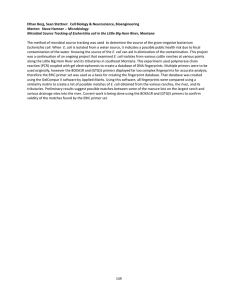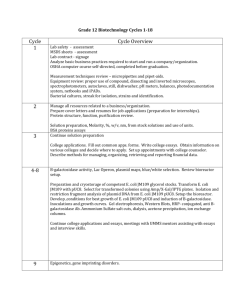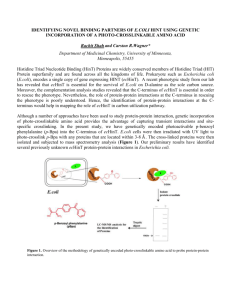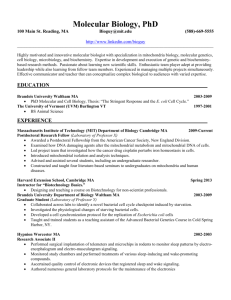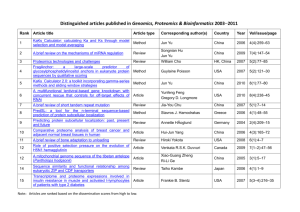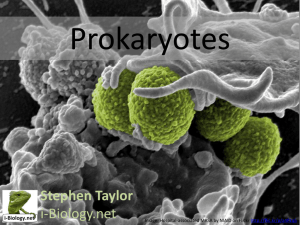講師:中央大學 系生所 陳健生副教授 摘要
advertisement
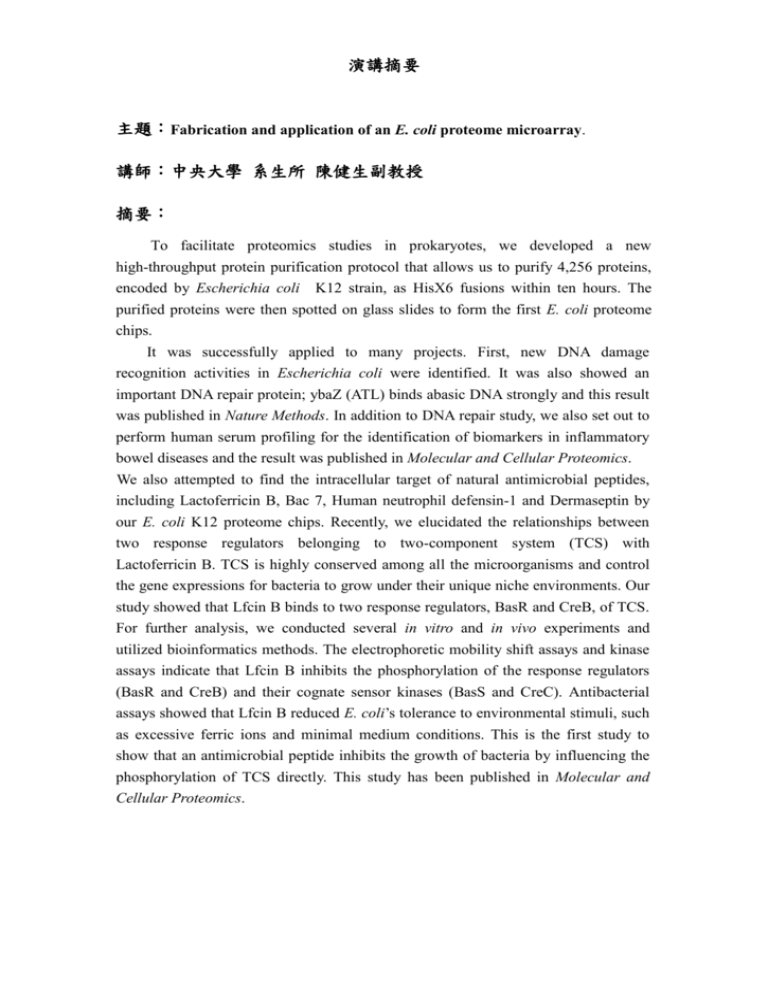
演講摘要 主題:Fabrication and application of an E. coli proteome microarray. 講師:中央大學 系生所 陳健生副教授 摘要: To facilitate proteomics studies in prokaryotes, we developed a new high-throughput protein purification protocol that allows us to purify 4,256 proteins, encoded by Escherichia coli K12 strain, as HisX6 fusions within ten hours. The purified proteins were then spotted on glass slides to form the first E. coli proteome chips. It was successfully applied to many projects. First, new DNA damage recognition activities in Escherichia coli were identified. It was also showed an important DNA repair protein; ybaZ (ATL) binds abasic DNA strongly and this result was published in Nature Methods. In addition to DNA repair study, we also set out to perform human serum profiling for the identification of biomarkers in inflammatory bowel diseases and the result was published in Molecular and Cellular Proteomics. We also attempted to find the intracellular target of natural antimicrobial peptides, including Lactoferricin B, Bac 7, Human neutrophil defensin-1 and Dermaseptin by our E. coli K12 proteome chips. Recently, we elucidated the relationships between two response regulators belonging to two-component system (TCS) with Lactoferricin B. TCS is highly conserved among all the microorganisms and control the gene expressions for bacteria to grow under their unique niche environments. Our study showed that Lfcin B binds to two response regulators, BasR and CreB, of TCS. For further analysis, we conducted several in vitro and in vivo experiments and utilized bioinformatics methods. The electrophoretic mobility shift assays and kinase assays indicate that Lfcin B inhibits the phosphorylation of the response regulators (BasR and CreB) and their cognate sensor kinases (BasS and CreC). Antibacterial assays showed that Lfcin B reduced E. coli’s tolerance to environmental stimuli, such as excessive ferric ions and minimal medium conditions. This is the first study to show that an antimicrobial peptide inhibits the growth of bacteria by influencing the phosphorylation of TCS directly. This study has been published in Molecular and Cellular Proteomics.

